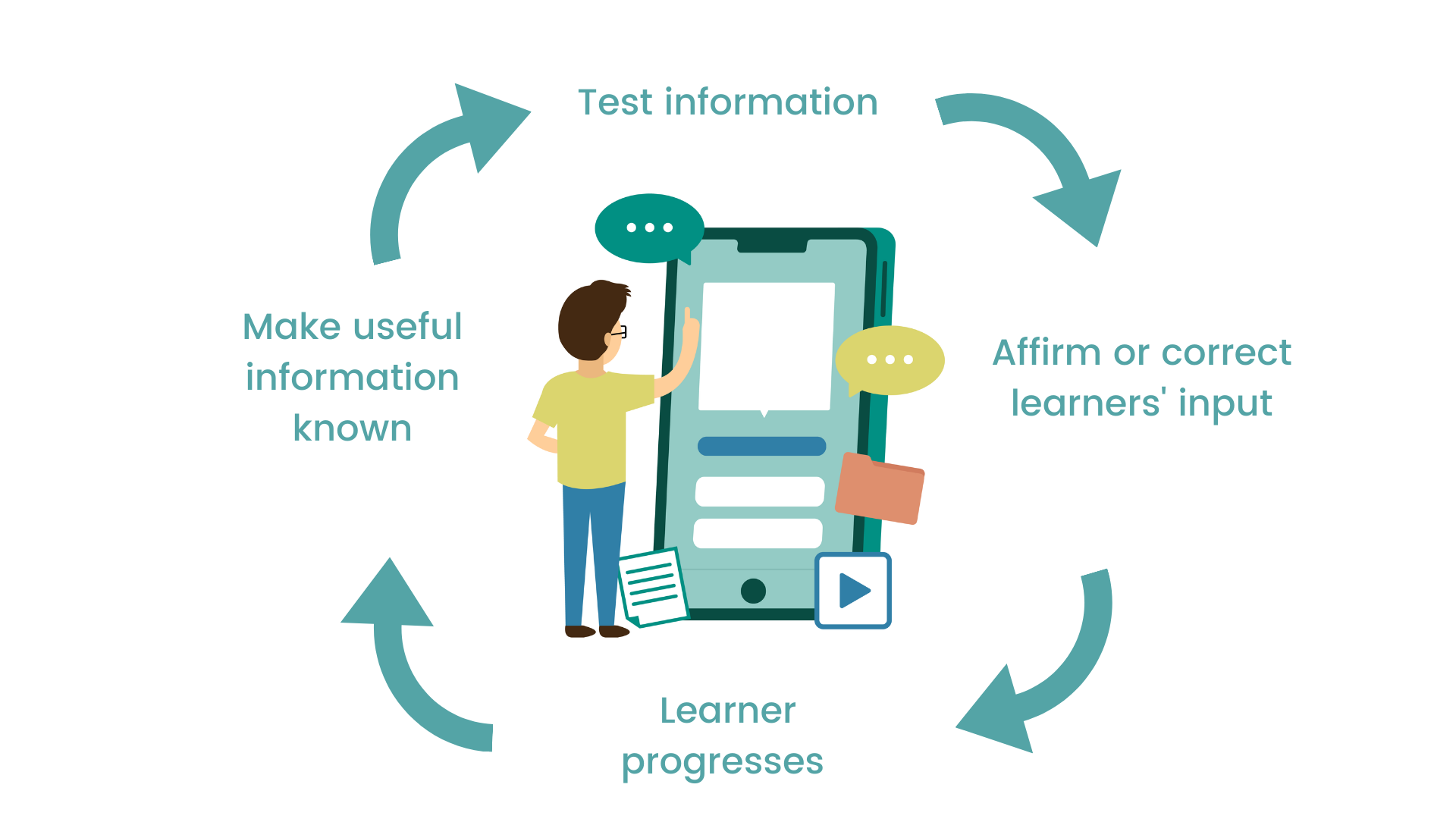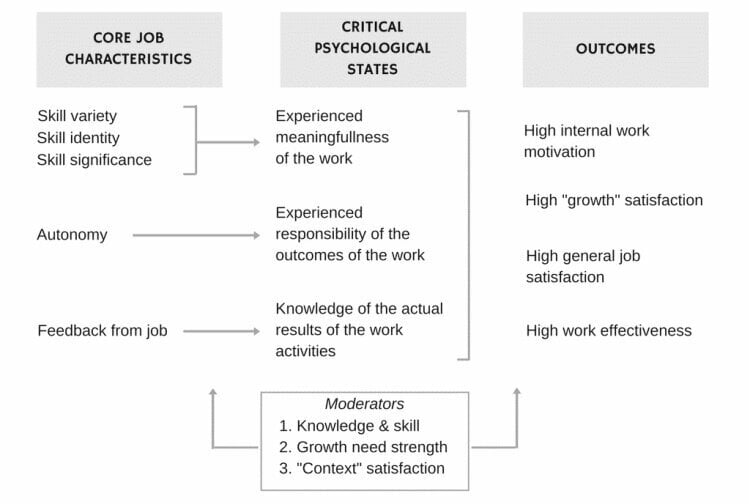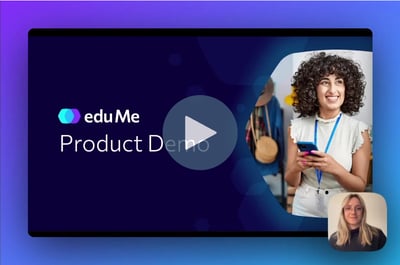It’s no secret that feedback is an important component of effective learning. Feedback improves learner confidence, motivation to learn and ultimately, a learner’s attainment.
It’s also what your people want - 65% of employees say they want more feedback.
Feedback comes in many shapes and forms. You can deliver feedback episodically, in isolated instances or on an ongoing basis. You can add it in at the end of a learning module, provide it on a question-by-question basis, or address it once annually in the form of performance review.
But what is the optimal way for learners to receive feedback?
What is instant feedback and why is it important?
Feedback is “information provided by an agent regarding aspects of one's performance or understanding”. It’s a reaction to a learners’ action that aims to engage, inform and increase knowledge by reducing “discrepancies between current understandings and performance and a goal”.
Instant feedback is when information is provided contextually and “on-demand”, in immediate response to a learners’ action and in the flow of learning. It helps a learner deepen their understanding. After they have given input (i.e. chosen an answer) instant feedback serves to reinforce knowledge by correcting mistakes, affirming competence or debunking misconceptions on the topic.
The more frequent and consistently you provide feedback, the better. When you follow up learning with immediate feedback, it causes learners to pause, engage, and modify behaviour in the moment. Giving feedback instantly as opposed to periodically makes learning an active rather than passive experience.
Ideally an instant feedback loop should look like this:

As feedback is presented at a timely and relevant moment, learners can absorb or act on it then and there, while it’s contextual to present learning and top of mind.
“[Feedback] plays a decisive role in learning and development… We learn faster, and much more effectively, when we have a clear sense of how well we are doing and what we might need in order to improve.” - Dai Hounsell, No Comment? Feedback, Learning and Development
Correcting mistakes or reinforcing answers in the flow of learning helps on three fronts - to make learning autonomous, self-directed and to better embed received information.
When someone experiences an obstacle in learning - such as choosing an incorrect answer - and they are presented with real-time feedback about why their choice was wrong, they are motivated to set higher goals for themselves, and bridge the gap between their input and the goal, to improve performance. This satisfies a feeling of autonomy.
They are also more likely to successfully retain the information that enabled them to progress, than if they never encountered a problem at all. In other words, providing immediate feedback enables people to better learn from any mistakes they make.
If they get the answer right to begin with, it’s still valuable to provide feedback instantly, as it reinforces why they were right. It motivates by affirming their competence. This brief moment of intervention gives context and meaning to their correct input, which makes the material more memorable.
It’s especially important to provide real-time feedback when learning is occurring online or digitally, as there is no one present in-person to correct a mistake.
Why is infrequent employee feedback ineffective?
When feedback is intermittent rather than ongoing and in the flow of learning, it makes it susceptible to “recency bias”.
Recency bias is when things are assessed or judged by recent events, rather than by a more holistic, historical view.
I.e., a learner underperforms in recent courses you’ve published. This recent poor performance clouds judgement of their longer-term performance.
It is also ineffective because it doesn’t provide feedback when people most need it - while they are learning, or make a mistake, i.e. at their point of need.
When feedback is decontextualized from a learning moment, learners will find it harder to act on or implement, to improve their performance. This is because it’s delayed - either they forget the feedback by the time it becomes relevant again, or it doesn’t relate to the specific learning curve they are tackling in that moment.
This is likely why employees feel infrequent feedback in the form of annual performance reviews is a needless HR requirement (59%) that has no impact on how they carry out their job (58%).
Why is it important to make feedback frequent?
1. Feedback engages, motivates and improves achievement
“Feedback is one of the most powerful influences on learning and achievement” - John Hattie, The Power of Feedback
According to the Hackman and Oldham model of work motivation, feedback is one of five characteristics in a job that can enhance employee motivation and by extension, improve employee performance.

40% of people are actively disengaged when they receive no or little feedback. Providing timely, relevant feedback triggers intrinsic motivation. This type of motivation comes from within, rather than from an external stimulus like money, which makes it more powerful.
Receiving regular feedback incentivizes, resulting in a self-motivated desire to continue learning, improve performance and attain in learners.
2. Millennials value feedback
Millennials have a different set of demands from employers, and place greater importance on different things in a job than their predecessors did. One of these things is feedback. While 60% of employees reported they want to receive feedback on a daily or weekly basis, this figure shot up to 72% for those aged under 30.
They also grew up in the technological zeitgeist, with the ability to access any information on-demand, whenever and wherever they needed it.
This expectation to have information accessible at their fingertips translates to all aspects of life, from learning a new recipe, to receiving feedback on the job. 80% of Millennials prefer on-the-spot feedback, and that reported feedback was imperative to their growth and understanding.
As Millennials and Gen Z make up the workforce in increasing numbers, companies need to adapt to their expectations.
3. Feedback improves employee retention
In a study of 65,672 employees, Gallup found that companies who gave strength-related feedback had 14.3% lower turnover than those who gave no feedback.
How to make your feedback effective
1. Make sure feedback is given in real-time (instant)
When feedback is given in real-time it is more relevant, it can be immediately acted on and it creates stronger mental ties to learning material. This all improves the effectiveness of your learning.
“A general rule is that, the sooner the feedback is given, the better it affects the employee's performance. Thus, according to [Daniels & Daniels, 2004], the immediacy of feedback i.e. how soon the feedback is given, has a strong impact on the effect the feedback may provide.” - Eloise Marthouret, The effect of quick feedback on employee motivation and performance
2. Make sure it’s ongoing
Continuous feedback complements continuous learning, but 28% of employees report that feedback is not frequent enough to help them understand how to improve.
Make a habit of incorporating feedback in all content you create. Be as thorough as to include a piece of feedback for every answer option you present. It may seem like overkill to add feedback to every possible answer, wrong or right, but the more guidance you give everytime, the deeper their understanding of a topic.
3. Make it relevant
Feedback should always relate to the material a learner is dealing with in the moment, otherwise it runs the risk of being non-specific, vague and ineffective - it loses its power in embedding knowledge. 17% of employees feel that the feedback they get is not sufficiently specific.
“Feedback has no effect in a vacuum; to be powerful in its effect, there must be a learning context to which feedback is addressed.” -Eloise Marthouret, The effect of quick feedback on employee motivation and performance
4. Complement it with positive reinforcement
Reinforcement differs from feedback in that it incentivizes the desire for a learner to repeat a behaviour. E.g. to choose the correct answer after choosing the wrong one, or to retake a test or course.
“The most effective forms of feedback provide cues or reinforcement to learners.” - John Hattie, The Power of Feedback
So make sure feedback you provide is encouraging, constructive and positively reinforces people, so that learners are motivated to try again and keep going, rather than giving up in frustration.
5. Structure feedback well
Before learning is delivered, make the desired outcome clear at the start (set expectations and objectives). Receivers of feedback decide to adjust their behavior by comparing it to a goal.
Then, in the flow of learning, make sure to deliver real-time feedback, when people make mistakes (or, when they choose a right answer) to reinforce and embed learning.
If delivering a more formalised assessment or test, compare desired outcome to actual outcome at the end. This could be in the form of a test score screen where results are revealed to learners. Then, provide guidance and positive reinforcement to bridge the gap between actual performance and desired outcome.
6. Make feedback two-way
Feedback should be a two-way street. As essential and impactful as giving feedback is, you should also routinely ask for feedback from people. Not just because doing so can improve performance by 4.6 times, but because when you seek feedback on your learning material you learn how to improve your content.
Feedback-informed content is more personalized - it more effectively addresses peoples’ actual knowledge gaps than taking a stab in the dark and creating content around what you think they might need to know.
That’s why we created a Surveys feature in eduMe.
The takeaway...
Empowering your people with ongoing, real-time feedback motivates them, improves performance and encourages self-autonomy in learning.
By delivering instant feedback, you make sure the gap between a learner’s current level of knowledge, and the level of knowledge you would like them to attain is more successfully and easily bridged.
Want to see how you can use eduMe to create powerful data-informed learning material and deliver instant feedback that engages and embeds knowledge? 👇






